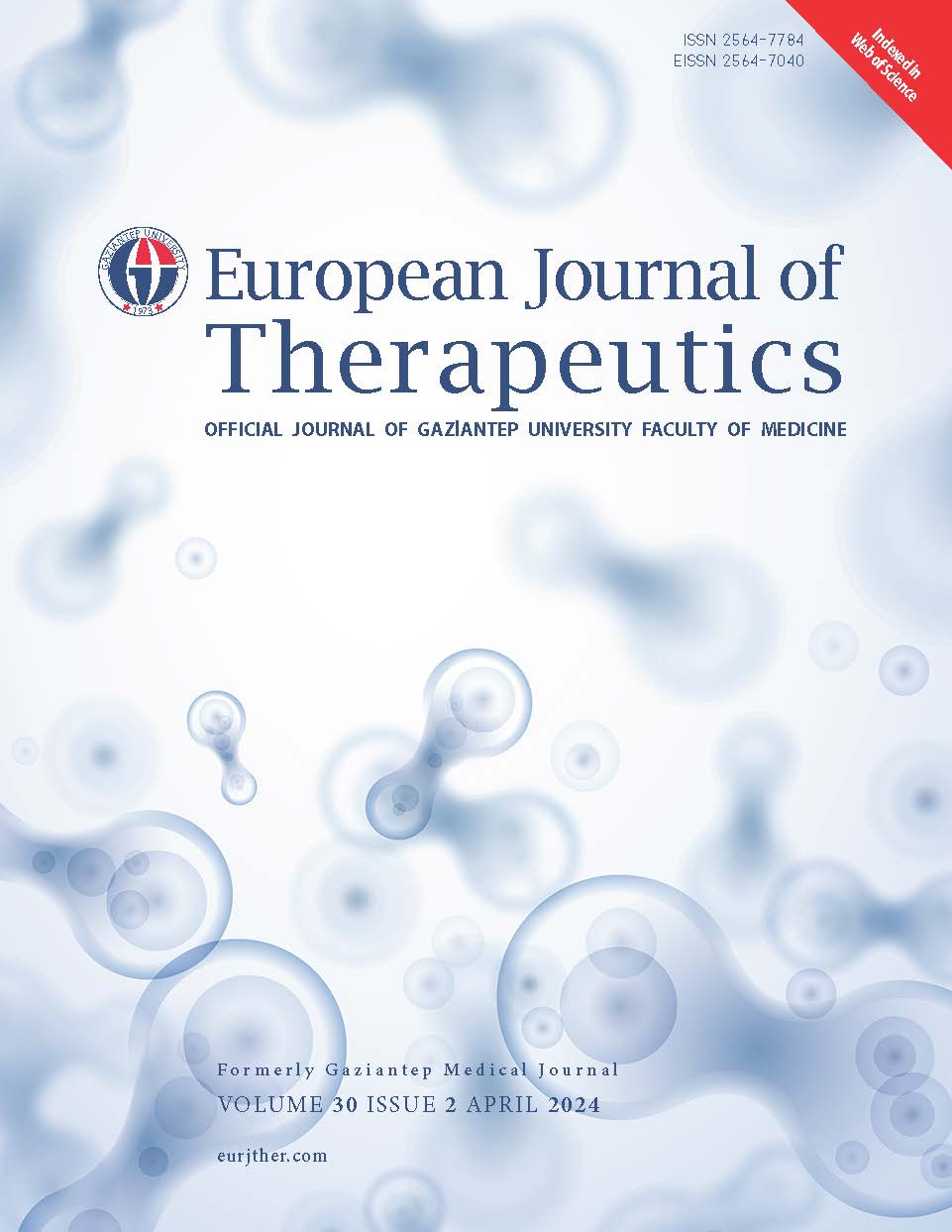Evaluating RDW’s Role in Heart Failure Mortality: Insights and Implications
DOI:
https://doi.org/10.58600/eurjther2057Keywords:
Heart failureAbstract
To the Editor,
I am writing to express my appreciation for the recent publication by Umit Yuksek, "Red Cell Distribution Width Is an Independent Predictor of 1-Year Mortality in a Turkish Patient Population with Acute Decompensated Heart Failure" [1]. This study contributes significantly to our understanding of prognostic factors in acute heart failure, highlighting the importance of red cell distribution width (RDW) as an independent predictor of 1-year mortality in patients with acute decompensated heart failure. The methodology used in the study, which involved a cohort of 101 patients, provides an analysis of the predictive value of RDW as well as traditional clinical predictors. The finding that a 1% increase in RDW is associated with a 44% increase in 1-year mortality is particularly striking and emerging as a simple but powerful prognostic marker in clinical practice.
In addition to the limitations mentioned by the author, there are a few other factors that could potentially impact the results. First, studies on the effect of demographic characteristics on the value of RDW show that RDW is associated with various clinical conditions and demographic factors [2]. It has been reported that RDW can be affected by a number of factors, such as age, gender, inflammation, coronary artery disease, heart failure, hyperlipidemia, diabetes mellitus, pneumonia, and chronic obstructive pulmonary disease. Patients with acute decompensated heart failure may also be frequently intertwined with these diseases during their initial admission. The fact that some of these important demographic characteristics were not clearly explained in the patient population of the study may be important in terms of influencing the results of the study. The criteria for inclusion or exclusion in the study are also not comprehensive and clear. We think that these should be specified in more detail. In addition, the non-invasive diagnosis of heart failure with preserved ejection fraction (HFpEF) is difficult and controversial. For this reason, it is recommended to use scoring systems like H2FPEF and HFA-PEFF for the diagnosis of HFpEF [3,4]. We believe that if any echocardiography or laboratory parameters other than the EF were evaluated while considering this patient group, it would be good to mention the methodology section. However, mentioning this issue in the limitations section may be useful if it is not mentioned.
Second, when we look at the comparison of the clinical and laboratory characteristics of the subgroups with normal, high, and very high RDW values, it is noteworthy that factors such as Killip classification, mitral insufficiency, atrial fibrillation, cardiogenic shock, inotropic drug requirement, which may have significant effects on mortality in acute HEART FAILURE, do not have a significant relationship with high RDW. It also appears that even if it is not statistically significant, the EF value is positively correlated with RDW. As a result, despite this important success of RDW in showing a 1-year mortality estimate, it also has a weak relationship with many other mortality predictor parameters in acute heart failure, suggesting that unforeseen clinical conditions or parameters may potentially affect RDW in this study group.
Statistically significant findings may not always be clinically or biologically significant. RDW may indicate that it is a clinically important variable, but this effect may be small and not make a significant difference in practice. The reason for coming to this conclusion is that the important limitations mentioned above may affect the study results. In conclusion, we believe that further research is necessary to investigate the mechanisms underlying the association between RDW and mortality in acute heart failure patients and to examine the potential of RDW to guide therapeutic interventions. We commend the author of this study, which not only enriches our understanding but also opens avenues for future research in acute heart failure management, and we thank the journal for publishing it.
Yours sincerely
Metrics
References
Yuksek U (2023) Red Cell Distribution Width Is an Independent Predictor of 1-Year Mortality in a Turkish Patient Population with Acute Decompensated Heart Failure. Eur J Ther 29:829-837. https://doi.org/10.58600/eurjther1803
Salvagno GL, Sanchis-Gomar F, Picanza A, Lippi G (2015) Red blood cell distribution width: A simple parameter with multiple clinical applications. Crit Rev Clin Lab Sci 52:86-105. https://doi.org/10.3109/10408363.2014.992064
Reddy YNV, Carter RE, Obokata M, Redfield MM, Borlaug BA (2018) A Simple, Evidence-Based Approach to Help Guide Diagnosis of Heart Failure With Preserved Ejection Fraction. Circulation 138:861-870. https://doi.org/10.1161/CIRCULATIONAHA.118.034646
Pieske B, Tschope C, de Boer RA, et al. (2020) How to diagnose heart failure with preserved ejection fraction: the HFA-PEFF diagnostic algorithm: a consensus recommendation from the Heart Failure Association (HFA) of the European Society of Cardiology (ESC). Eur J Heart Fail 22:391-412. https://doi.org/10.1002/ejhf.1741
Downloads
Published
How to Cite
License
Copyright (c) 2024 European Journal of Therapeutics

This work is licensed under a Creative Commons Attribution-NonCommercial 4.0 International License.
The content of this journal is licensed under a Creative Commons Attribution-NonCommercial 4.0 International License.


















